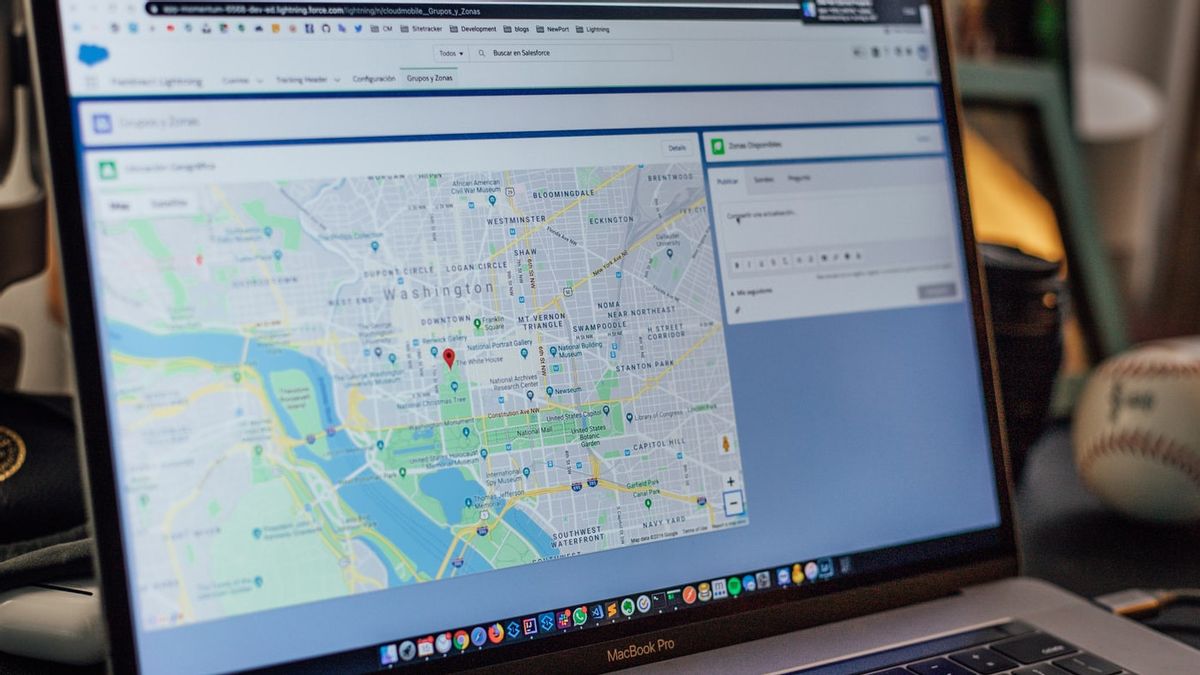JAKARTA - Not only about smartphone competition, cellphone manufacturers also often compete to develop various applications according to the needs of their users, one of which is a navigation application. As we know, Google Maps first explored its career, followed by Apple Maps, which didn't want to be left behind.
Much has been said about the two navigation applications, but not many know which one is more accurate. This is because the two most popular map makers on the planet have recently released updates to their interfaces and databases.
Seeing this, the following VOI summarizes the differences between Google Maps and Apple Maps to help you find the best choice of mobile navigation, quoted from Digital Trends, Sunday, February 23.
1. Superior Technology
Google Maps, born in 2005, has been the premier mobile mapping service for iOS and Android devices since the inception of smartphones. Then, in 2012 Apple decided to launch Apple Maps specifically for iPhone and iPad. Over the years, Apple Maps has had technical issues like wrong directions, lack of support for public transportation, and lots of bugs that have rendered the service nearly unusable. In contrast to Google Maps which continues to improve and reigns supreme.
Along with the launch of iOS 13 and iPad OS 13, Apple released the updated Maps application. Currently, Apple Maps is replaced with new data collected directly by Apple.
The updated maps are much more detailed and accurate, based on millions of miles in cars equipped with cameras and lidar, high-resolution satellite imagery, Apple employees exploring the environment on foot with a radar module tied back, and millions of images taken over the air.
When viewed, these two apps are similar and both free to download, also offer basic mapping features including driving directions with turn-by-turn navigation, walking, and public transport directions. However, the main differences might affect which mapping service you choose.
2. Application Availability
Apple Maps is specially designed for iPhone, iPad, and Apple Watch devices. In contrast to Google Maps which can allow cross-platform. So if you are an Apple product user who wants to use Google Maps, you have to download it from the App Store.
After that, Apple users can use Google Maps in the same way they do other third-party applications.
3. Interface Features
When you use these two apps together, you'll notice some subtle differences in how the map is presented visually. Although they have become more alike over time.
Note, the map rendition of Apple Maps looks a little flatter and shows many default locations, but the text and icons are small in size. However, Google Maps also highlights a lot of default locations, but they don't always match Apple Maps and the icons tend to be bigger, brighter, and more attractive.
With Apple Maps, you can search for a specific location using the search bar at the bottom of the screen and change map settings (map, satellite, or transit) by tapping the information button on the top right, which takes you to a second screen. to make adjustments.
Apple also has special icons for landmarks and you can see the current weather on a location. This feature is reminiscent of Google Street View.
While there may be fewer map icons when launched on Google Maps, the design looks brighter, with more color and contrast, so it looks a little busier and busier than Apple Maps.
Like Apple Maps, Google Maps has a search box and different viewing modes as well as more options for customizing maps. Google Maps has 3D models of most buildings, quick access to the address you're looking for, and settings for Google accounts and maps. Apple has a function similar to that.
Both of these map applications base their estimated user arrivals on current traffic conditions. Red marks along the route indicate heavy traffic, yellow indicates moderate traffic, and blue indicates no traffic. Users can also view various warnings, from accidents to road closures.
In that case, Google shows more clearly how traffic will affect travel by showing the time in red which shows heavy traffic.
Google has more options on the home screen, such as a compass, directions, and quick search, making it easier to find what you're looking for in real time. Additional information is available on Apple Maps, but the user has to drag from the bottom of the screen and tap the category option.
Far different from Google Maps, one of Apple Maps' most striking features is Flyover Mode, a feature that lets users explore densely populated city centers in 3D landscapes of modeled buildings and structures. Flyover also has a City Tours feature that automatically guides users to various city landmarks.
But again, Google first made part of its Street View, a separate app for user-contributed panoramic views from many places around the world, available for viewing on the main Maps app.
Two other popular Google Maps features are bike maps and offline access. In a bike-friendly city, this feature is very handy, a function that Apple Maps doesn't offer. Apple Maps recently added bike sharing stations to the places list, and it helps, but it's not the same as a bike route mapper that's on real roads.
4. Privacy
Since Apple and Google are different companies with different philosophies about data and privacy, users should consider when deciding which one to use as your default mapper. It is much easier to have all the stored destinations and custom mapping details in one secure service.
Apple makes more of a point to concentrate on privacy than Google and most app functions can be accessed without logging into a user account. Most of the data, navigation, and directions are stored directly on the device, not in the cloud and the mapping info that you look for does not refer to your Apple ID.
In time, the data collected by Maps will be associated with a "random identifier" which is constantly being reset. A process called fuzzing changes the specific location where a user initiates a search for an inappropriate location after 24 hours.
The application will not record a history of what was searched for or where the user went. Google is also aware of user privacy concerns and offers many customization options, such as incognito mode.
5. Other Functions of Maps
Seeing this, Apple Maps is certainly far behind from Google Maps which does not only concentrate on landmarks such as navigation. Because of its long history and beginnings. Google is increasingly working to be a tour guide for many communities.
Google Maps also shows more information such as website addresses, the ability to make calls directly from the application. In contrast to Apple Maps, which only takes data from Wikipedia and TripAdvisor. Apart from that, both Apple and Google also offer information regarding business opening times, descriptions, photos and user generated star ratings.
Apple also includes Yelp, a third-party app, while Google shows users waiting times and restaurant reviews, and helps find and navigate to new places to visit.
The English, Chinese, Japanese, Arabic, and French versions are automatically generated by the AI. So there may still be inaccuracies in translating, please always see Indonesian as our main language. (system supported by DigitalSiber.id)













